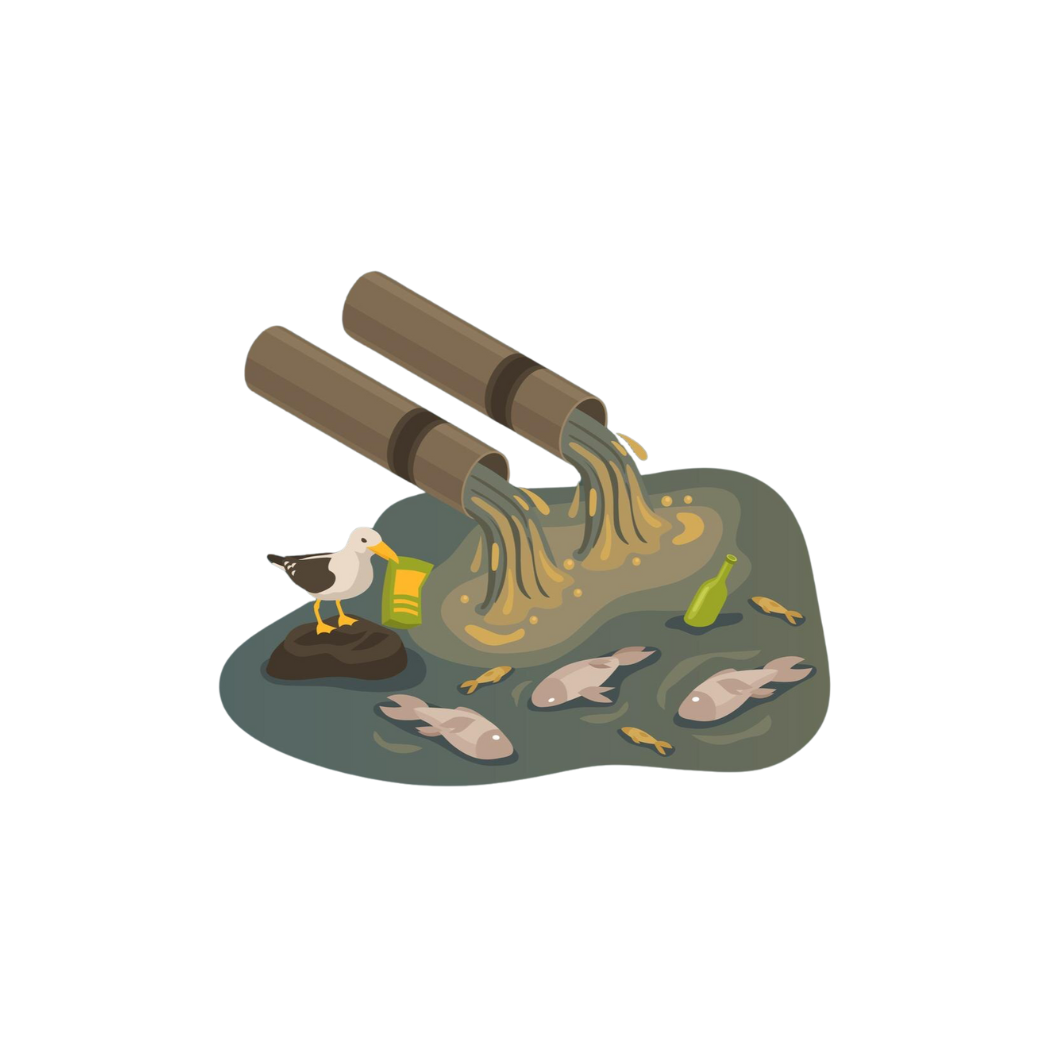Why It Matters
Shifting Currents: From Consumption to Care.
Stormwater retention isn't just about infrastructure—it's about life. When we slow, spread, and sink rain where it falls, we prevent polluted runoff from overwhelming waterways, restoring the balance of ecosystems that depend on clean, cold, flowing water.
This directly impacts keystone species like salmon, whose wellbeing is vital to the symbiotic health of entire ecosystems. Salmon nourish forests with marine nutrients, sustain indigenous traditions, and support species from eagles to orcas. By investing in decentralized water stewardship, we invest in nature’s interconnected resilience—beginning with a raindrop and rippling out to entire bioregions.
Rain is a resource—not runoff.
“Polluted runoff is one of the greatest threats to clean water in the U.S.” -EPA.gov🔗
Stormwater
An Overlooked Threat & Critical OPPORTUNITY
-
Left unmanaged, runoff flows directly into our streams, lakes, and marine ecosystems, bypassing treatment systems and introducing pollutants that can have far-reaching environmental and public health impacts.These chemical pollutants can harm not just a beach, but an entire ecosystem. Tiny microbes, such as plankton or algae, absorb pollutants in the runoff. Fish or shellfish consume the microbes or absorb the pollutants directly. Animals consume the fish, increasing the level of pollutants in their own bodies. This process in which the concentration of a substance increases as it passes up the food chain is called biomagnification. 🔗
-
Eutrophication, is the gradual increase in concentration of phosphorus, nitrogen, and other plant nutrients in aquatic ecosystems. Among the most concerning consequences is nutrient loading— runoff from lawn fertilizers, pet waste, and decaying organic matter—which fuels harmful algal blooms. These blooms reduce oxygen levels, create dead zones, destroy aquatic habitats, and pose risks to both wildlife and human communities by contaminating drinking water supplies. 🔗
-
Combined sewer overflows (CSOs) Combined sewers route stormwater, household sewage, and industrial wastewater through the same pipeline— and can become overwhelmed during periods of heavy rain. When capacity is exceeded, untreated wastewater is released directly into natural waterbodies, compounding the risks to ecosystems and public health. 🔗
“One-third of Washington’s water doesn’t meet state water quality standards due to polluted stormwater runoff.”
Many of the water systems that keep ecosystems thriving and feed a growing human population have become stressed. Rivers, lakes and aquifers are drying up or becoming too polluted to use. More than half the world’s wetlands have disappeared. 🔗
World’s Water Supply
Water covers about 71% of the earth's surface.
97% of the earth's water is saline(too salty for drinking, growing crops, and most industrial uses except cooling).
3% of the earth's water is fresh.
2.5% of the earth's fresh water is unavailable: glaciers, polar ice caps, atmosphere, and soil; highly polluted; or lies too far under the earth's surface to be extracted at an affordable cost.
0.5% of the earth's water is available fresh water.
If the world's water supply were only 100 liters (26 gallons), our usable water supply of fresh water would be only about 0.003 liter (one-half teaspoon).🔗
water scarcity

aquifer recharge
Green Stormwater Infrastructure refills groundwater by letting rain soak into the soil, which supports clean, reliable water for the long term. In cities, pavement and pipes speed stormwater away, while heavy use and pollution put added pressure on aquifers. Simple green solutions like cisterns, rain gardens, bioswales, and permeable pavement let water slow down, filter through, and recharge the ground naturally.
As the demand for resilient water solutions grows, a robust and circular water economy becomes essential.






